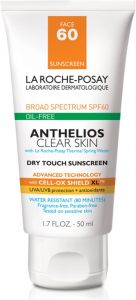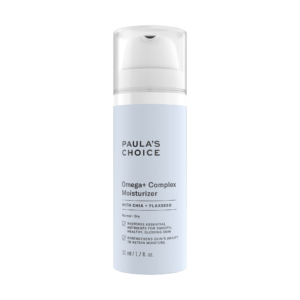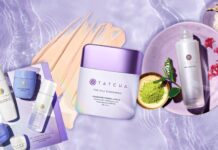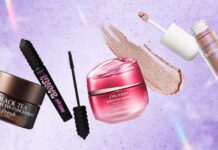
It’s easy to talk about the products we should or shouldn’t use. What’s not easy is finding more information that paints a more complete picture. So what’s the truth about alcohols, fragrances, and mineral oil in our skincare products?
Everyone’s skin is unique. We all have different degrees for tolerating certain ingredients. To put simply, our skin is changing on a constant basis. So you can’t consider something as good or bad. This also applies to ingredients labeled as “bad” according to Clean Beauty brands.
Comedogenic Ingredients
What’s the truth with skincare ingredients under this category? It actually depends on the person and their skin type. For some people, ingredients like coconut oil, olive oil, and shea butter keep their skin soft and hydrated. For others, the same ingredients can lead to acne breakouts, clogged pores, and a greasy film that’s unpleasant and suffocating!
This also applies to mineral oil or petroleum-based products as well. Mineral oil comes from refined petrolatum, which is a leftover product from crude oil. Perhaps you’re wondering, “what is refined-petrolatum, anyway?” It’s what Vaseline is made of! Who knew?
Apparently these ingredients become the subjects of very heated arguments within the beauty community. While some people say that petrolatum works wonders for softening and trapping moisture in the skin, others are saying it’s too thick and even irritating.
It’s even more so for those with eczema, acne, and rosacea. As for oily skin types, it’s possible to find these ingredients heavy, pore-clogging, and unpleasant to work with. If this sounds like you, you can look for products that don’t contain these ingredients. You can also look specifically for products labeled as “oil-free” or “non-comedogenic.”
Recommended Products
Alcohols
Here’s an assumption that many people claim regarding alcohol: it’s bad for you.
But again, this isn’t the complete truth for this skincare ingredient.
You’re likely to find alcohol in products ranging in every step of your skincare routine. From your toners, moisturizers, and sheet masks, you’ll find that most products out there contain some amount of alcohol. But we’ve come to find that alcohol has many properties that actually work to help you and your products! Let’s dive a little deeper.
Roles of Alcohol
Common Belief
It’s true that alcohol is drying. It can strip the skin’s natural moisture and oils away, which can then increase the chance of irritated and cracked skin. In theory, this makes sense since the skin relies on hydration to keep itself healthy.
But according to a 2008 study, the concentrations of alcohol for skincare products were so tiny that it didn’t affect the skin barrier. If anything, the study writes, consuming or inhaling ethanol was more concerning rather than applying to the skin.
Positive Roles
As we mentioned earlier, alcohol also plays multiple roles in your products. If you notice how your toners, astringents or serums are fast-absorbing or quick-drying in your skin, guess what ingredient helped with that. Yep.
Alcohol also helps your product sink quickly into your skin. In other cases, it helps other active ingredients penetrate into the deeper layers of the skin. It even acts as a preservative. This means it helps the product to last longer while preventing bacteria and mold from contaminating it.
Does this make more sense of why alcohol is used in so many products?
So now that we have a little more info on alcohol and its roles, let’s revisit the question: “is it safe to use?” Once again, it really depends on your skin. If you find that it has no adverse effects on your skin, you can continue to use it.
Another type of alcohol that you can look for is called “fatty alcohol.” In the ingredients list, you’ll come across “fatty alcohol” as “cetyl alcohol,” “stearyl alcohol,” and “cetearyl alcohol.” These alcohols work to soften the skin’s surface so it’s non-drying. They also act as thickening agents to provide texture to a product.
Recommended Products
Fragrance
Here’s another “controversial” ingredient. When it comes to fragrance, a lot of evidence seems to point towards the danger zone. According to the Environmental Working Group (EWG), products that contain high amounts of fragrance are considered “high hazard.” Fragrance itself received an 8/10 rating. But why did fragrance get such a high rating? Apparently, they note this ingredient as easily causing irritation and organ system toxicity.
But is this really worth fussing over?
Generally speaking, not really. Well… not as much as we tend to think when we hear the word “fragrance”. Which frankly sounds like the Witch of the West’s reaction to water from Wizard of Oz. “I’m meltinggg!”
This is what a 2017 published study suggested. The study categorized 220 potentially sensitizing ingredients into 6 groups of varying potencies (with 1 being the most potent and 6 being non-sensitizing).
The actual goal was to create a system that can accurately predict whether new chemicals can cause irritation in the skin. But the study nonetheless had very interesting information.
Here’s a really quick rundown.
- The experiment had healthy human volunteers taking patch tests of 89 different substances and chemicals in various concentrations.
- These volunteers took the patch test multiple times throughout the study and were monitored for skin reactions.
- The selected ingredient was then recorded and later assigned to a category.
- The study also took information from a previous study (which tested 131 substances) and combined the results to create a more accurate picture.
And the results?
There were chemicals present in every category. However, it was found that most of these chemicals were sorted into a “weak potency” category.
This indicates that the potential effects of affecting the skin were “less common or frequent, with a below 1% risk.” This seems to suggest that exposure to most ingredients were less likely to cause allergic reactions to the general public.
With that being said, the study informs readers that these results are not completely accurate. The experiment was conducted on a small number of human volunteers in a facility where everything is controlled. Therefore, the results cannot completely or fully represent the entire population.
On the flipside, an article from futurederm mentions that an “upward trend of allergic reactions and autoimmune diseases” can indicate a risk of allergic reaction to fragrances at estimates of 1.7- 4.1%.
This is in contrast to a study conducted in 1997, which mentioned an estimate of 1%. But author John Su acknowledges studies which state another aspect. Fragrance is considered “some of the most gentle and effective penetration enhancers available in the market”. Additionally, it can also act as aromatherapy.
What’s the truth about this skincare ingredient?
Based on the information presented here, is fragrance an ingredient you should avoid? Not really.
How about nixing completely? You can, if it suits your preference.
Is fragrance a bad ingredient? It really depends.
Sensitive skin types or skin conditions such as contact dermatitis and eczema should continue avoiding fragranced products. In a general context, however, a little fragrance won’t hurt you in the long run.
And at the end of the day, your body is unique and prefers different things. Depending on your preference, you are free to make your own decisions on what you use for your skin.
Recommended Products
For more detailed information on youthful skin, check out the full video:
Head over to more information and product recommendations:
















